The Hagia Sophia — or Ayasofya in Turkish — undeniably occupies the most prominent spot on the vast skyline of Turkey’s largest city, Istanbul, the bridging metropolis between Asia and Europe.
Initially, it was a Christian site of worship, erected during the 4th century AD, and what we see today on the site is not the first and original Hagia Sophia structure, but its second, more-than-just-magnificent, replacement.
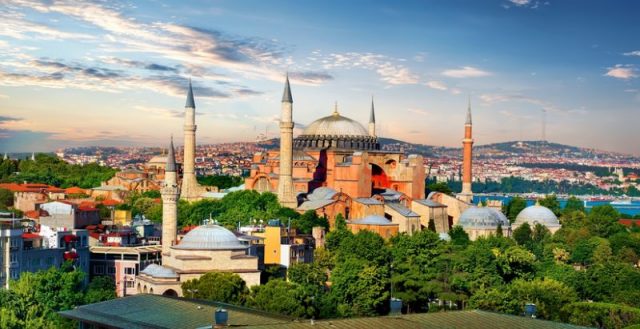
Beyond the fact that Hagia Sophia is highly praised for its aesthetics, its part throughout history has also been significant as it relates to religion, politics, and international affairs. In its centuries-long existence, Orthodox Christians and Muslims have both revered the site as their own.
The construction of the first Hagia Sophia church came under the orders of the Roman Emperor Constantius II, a year before his death in 361 AD, and in times when the city of Istanbul wore the name of Constantinople. But that early structure which entailed a wooden roof did not last very long.
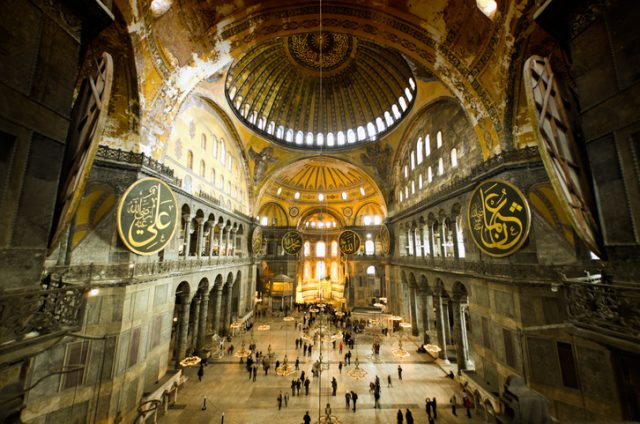
A fire engulfed the church in 404 AD as chaos spread in the wider area of the city. Some ten years after the fire, and now under Eastern Roman Emperor Theodosius II, Hagia Sophia was rebuilt anew. A beautiful entrance with five naves contained in the interior enhanced the appearance of the second structure.
Over the next century, Hagia Sophia came to resemble an important site for the Greek Orthodox church. But in another series of severe public discontent, this time against the famed Emperor Justinian I (he held power from 527 until 565), the building went up in the flames once more.
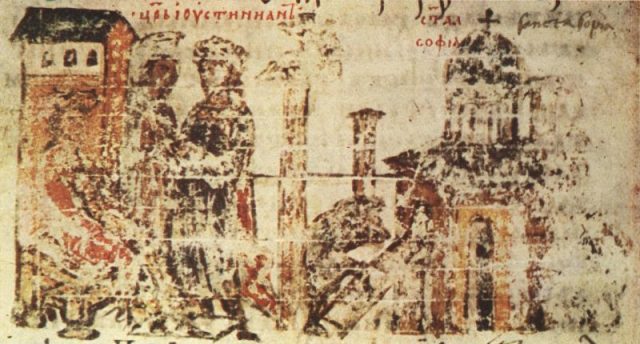
The fire caused irrevocable damage to the church, after which Justinian ordered its remnants to be leveled to the ground in 532. Esteemed architects of the era were hired to work on a new cathedral, and within a period of just six years, another Hagia Sophia structure gloriously rose again — the one that is still standing proud to this day.
As an astonishing architectural feat, the new edifice of Hagia Sophia boasts a larger, domed roof, reaching up to 180 feet at its highest point. The dome was supported by arches embellished with lavish mosaics depicting winged angels (hexapterygons). Measuring 270 feet in length and 240 feet in width, the new church also contained a half-domed altar and two porches.
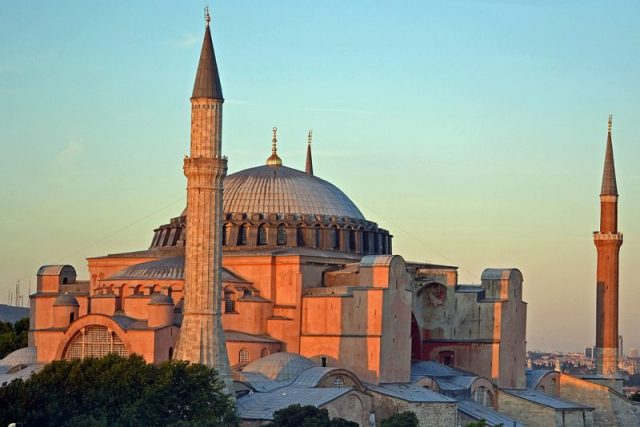
The building was constructed using an amalgamation of different materials, shipped to Constantinople from various corners of the vast and seemingly endless Byzantine Empire.
Some of the marble and brick can be traced to modern-day Egypt and Syria. The church’s interior was additionally adorned with marble from the Temple of Artemis, whose remains can be seen today in the ancient city of Ephesus, also in Turkey.
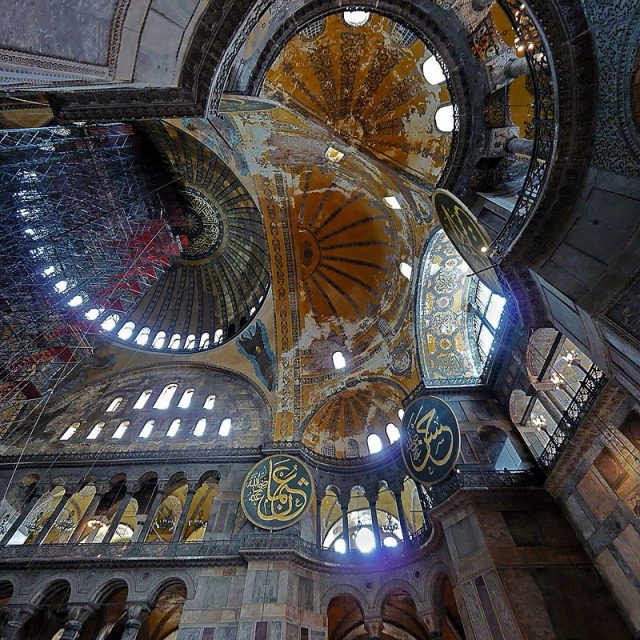
Elaborate mosaics of silver and gold shone from the walls of the basilica. Glass, gemstones, and clay were as well used for the mosaics, all of them revealing biblical scenes.
As appealing as it was, Hagia Sophia became the mother church of Greek Orthodox worshipers, the main and official Byzantine religion. Subsequently, the location was used for coronation ceremonies of the empire’s rulers.
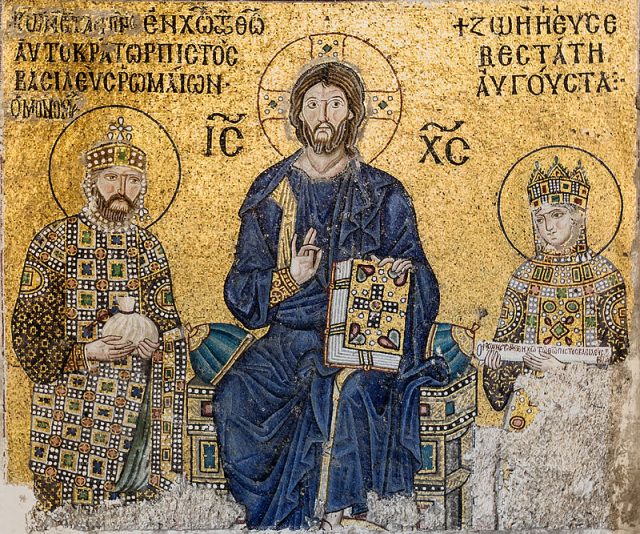
However, the basilica was not spared from further calamities. There were periods during the 8th and 9th centuries when an active ban in the empire did not allow the usage of religious pictures. In those instances, a great deal of the original paintings and mosaics secured at the Hagia Sophia were lost — some stolen, others significantly damaged.
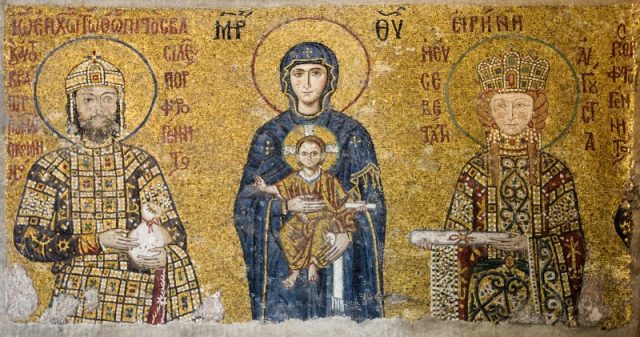
During the 13th century, the church was briefly seized by the Romans, who inflicted serious damage to the structure before the Byzantines regained control of the site.
Everything changed two centuries later, as a new powerhouse emerged in the region — the Ottomans. Under their courageous sultan Mehmet the Conqueror, this “great military leader, he captured Constantinople and conquered the territories in Anatolia and the Balkans that comprised the Ottoman Empire’s heartland for the next four centuries,” writes Britannica.com
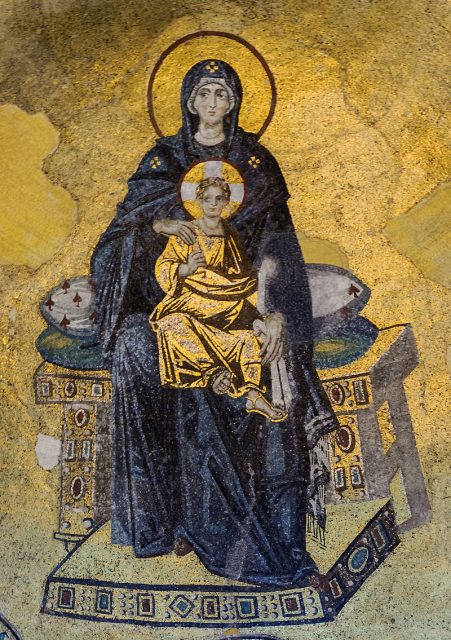
Since the Ottomans were religiously oriented towards Islam, the age-old church was quickly converted into a mosque. Mehmet the Conqueror did not necessarily order the destruction of the Hagia Sophia artworks.
The Byzantine mosaics were rather plastered over with golden Islamic calligraphy for example, and were later restored by the Fossati brothers, a pair of Swiss-Italian architects who lived and worked during the 19th century.
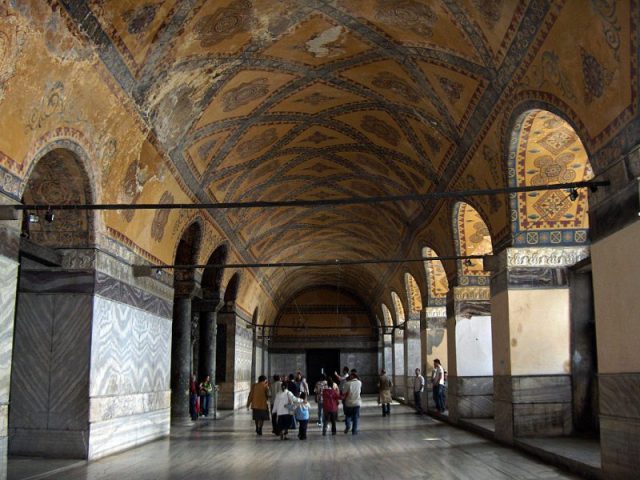
Gold calligraphy also covered the Hagia Sophia’s main dome, where previously a distinct mosaic likely depicted the image of Jesus Christ. With each new Ottoman emperor something else, emblematic of Islam was added to the Hagia Sophia, included its four minarets. Besides their religious function, the minarets suited the building well, enhancing its strength and stamina in case of earthquakes.
Related Video: A trip through Paris in the late 19th century including great old footage of Notre Dame
https://youtu.be/YKkZ1EmE3sc
A century has passed since the Ottoman Empire ceased to exist, and the Hagia Sophia today operates as a museum. Each year, millions of people visit the former church-turned-mosque site.
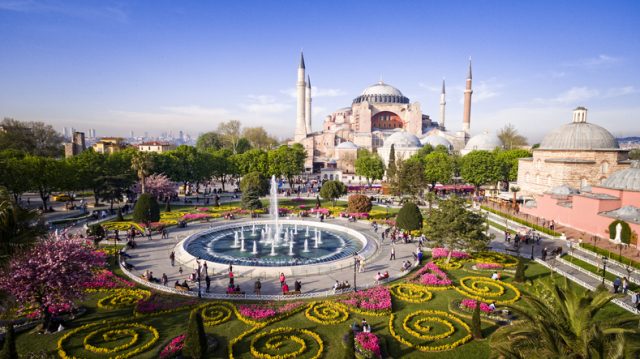
As recently as March 2019, the Turkish government revealed intentions to convert the Hagia Sophia back to being a mosque. The idea to turn back time and re-initiate Hagia Sophia as a mosque has been taking root in the country over the past few decades.
Nevertheless, Hagia Sophia is a protected heritage landmark site under UNESCO, thus any amendment of its status will need the approval of this organization.
